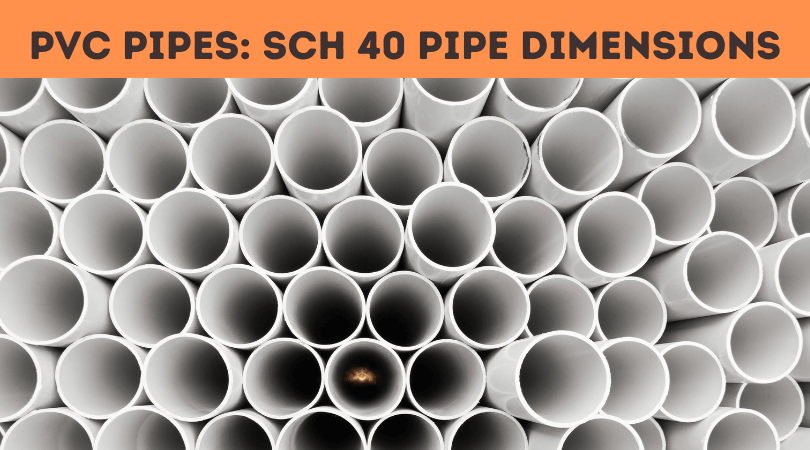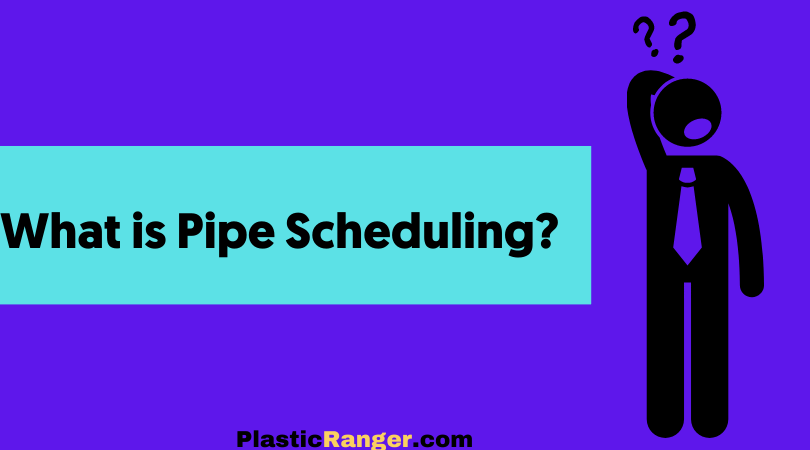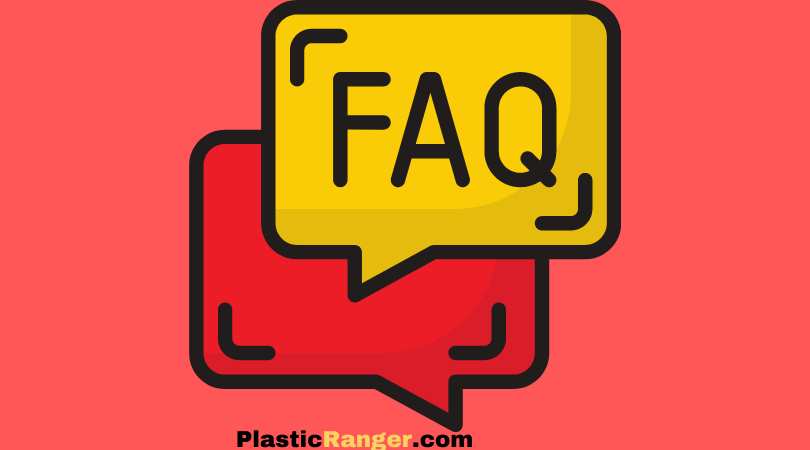PVC pipe sizes and dimensions are categorized into three major segments: schedule 40, 80, and 120. Here, I will discuss PVC schedule 40 pipe sizes and dimensions.
Sch 40 PVC Pipe Dimensions
Schedule 40 PVC pipe is a widely used plastic pipe designed for moderate-pressure applications. The term “Schedule 40” refers to the wall thickness of the pipe, with dimensions standardized according to the American National Standards Institute (ANSI).
These pipes are lightweight, corrosion-resistant, and non-conductive, making them a preferred choice for various applications like water supply, drainage systems, and certain chemical conveyances.
Schedule 40 PVC pipes have specific dimensions, including outer diameter (OD) and wall thickness, which vary depending on the nominal pipe size (NPS).
For example, a 1-inch Schedule 40 PVC pipe has an outer diameter of 1.315 inches and a wall thickness of 0.133 inches. These dimensions determine the pipe’s strength, flow rates, and pressure capacity.
Selecting the right size and specification for each application is essential to ensure safety and efficiency.
Schedule 40 PVC Pipe Dimensions Table
| Nominal Pipe Size | Outside diameter | Average I.D. | Min. Wall | Nominal wt./ft. | Maximum W.P PSI |
| 1/8″ | 0.405 | 0.249 | 0.068 | 0.051 | 810 |
| 1/4″ | 0.54 | 0.344 | 0.088 | 0.086 | 780 |
| 3/8″ | 0.675 | 0.473 | 0.091 | 0.115 | 620 |
| 1/2″ | 0.84 | 0.602 | 0.109 | 0.17 | 600 |
| 3/4″ | 1.05 | 0.804 | 0.113 | 0.226 | 480 |
| 1″ | 1.315 | 1.029 | 0.133 | 0.333 | 450 |
| 1-1/4″ | 1.66 | 1.36 | 0.14 | 0.45 | 370 |
| 1-1/2″ | 1.9 | 1.59 | 0.145 | 0.537 | 330 |
| 2″ | 2.375 | 2.047 | 0.154 | 0.72 | 280 |
| 2-1/2″ | 2.875 | 2.445 | 0.203 | 1.136 | 300 |
| 3″ | 3.5 | 3.042 | 0.216 | 1.488 | 260 |
| 3-1/2″ | 4 | 3.521 | 0.226 | 1.789 | 240 |
| 4″ | 4.5 | 3.998 | 0.237 | 2.188 | 220 |
| 5″ | 5.563 | 5.016 | 0.258 | 2.874 | 190 |
| 6″ | 6.625 | 6.031 | 0.28 | 3.733 | 180 |
| 8″ | 8.625 | 7.942 | 0.322 | 5.619 | 160 |
| 10″ | 10.75 | 9.976 | 0.365 | 7.966 | 140 |
| 12″ | 12.75 | 11.889 | ..406 | 10.534 | 130 |
| 14″ | 14 | 13.073 | 0.437 | 12.462 | 130 |
| 16″ | 16 | 14.94 | 0.5 | 16.286 | 130 |
| 18″ | 18 | 16.809 | 0.562 | 20.587 | 130 |
| 20″ | 20 | 18.743 | 0.593 | 24.183 | 120 |
| 24″ | 24 | 22.544 | 0.687 | 33.652 | 120 |
Detailed knowledge about the dimensions is essential for dealing with anything related to PVC. However, I admit that it is a challenging process, often confusing to the point you don’t even know what to do.
Interesting Read – PVC Pipes: Schedule 40 VS 80
Schedule 40 PVC pipes: Applications
Home Plumbing
Potable Water Supply: Schedule 40 PVC pipes transport drinking water within residential structures due to their resistance to corrosion, scaling, and microbial growth. Unlike metal pipes, PVC doesn’t impart any taste or odor to the water.
Waste and Vent Systems: These pipes can also serve in drain, waste, and vent (DWV) systems, ensuring smooth disposal of wastewater from homes.
Irrigation Systems
Agriculture: PVC pipes are widely used in agricultural irrigation, given their durability and resistance to various environmental conditions. They transport water from the source to fields and crops.
Landscaping: For lawns, gardens, and other landscaped areas, Schedule 40 PVC offers an efficient way to distribute water. Its smooth interior ensures optimal flow rates, reducing the chances of blockages or sediment buildup.
Pool Plumbing
Water Circulation: PVC pipes are fundamental in swimming pool plumbing. They connect pumps, heaters, filters, and return jets, ensuring proper water circulation and filtration. Their resistance to chlorine and other pool chemicals makes them an excellent choice.
Spa and Hot Tub Plumbing: While PVC’s temperature tolerance needs to be observed, it’s often used in the plumbing of spas and hot tubs, given its chemical resistance and ease of installation.
Chemical Transportation
Industrial Use: Schedule 40 PVC is utilized in certain industries to transport chemicals. Given PVC’s resistance to corrosion, it can be ideal for moving non-aggressive chemicals. However, it’s essential to ensure that the specific chemical being transported is compatible with PVC to prevent degradation or leaks.
Wastewater Treatment: PVC pipes can be used in wastewater treatment plants where particular chemicals are used for treatment processes. Their durability and non-reactivity with many substances make them suitable for such applications.
Limitations of Schedule 40 PVC Pipes
Temperature Sensitivity: Schedule 40 PVC pipes have a temperature limit. Prolonged exposure to temperatures above 140°F can cause softening and compromise the pipe’s structural integrity.
Chemical Vulnerability: While PVC is resistant to many chemicals, it can degrade when exposed to certain solvents or aggressive chemicals. Always check compatibility before transporting or exposing the pipe to specific substances.
Brittleness: Over time, especially under cold conditions, PVC can become more brittle, making it susceptible to cracks or breaks upon impact.
UV Sensitivity: Direct and prolonged exposure to sunlight can weaken PVC due to UV.
What is Pipe Scheduling?
Scheduling is a process for determining the measurement of PVC pipes, and note that it has nothing to do with the human concept of time management. Instead, scheduling is a fabrication plan utilized to determine a plumbing material’s wall thickness. In simple language, a pipe schedule is a fixed standard for how thick a pipe’s wall must be established on how large or wide the pipe is in diameter.
Hypothetically, a pipe schedule is a table with complex data prefigured with standardized textbook values for pipes and fittings. For instance, manufacturers looking to produce 2″ Schedule 40 PVC pipe will know the exact thickness of the pipe wall categorized as a 2″ Schedule 40 PVC pipe.
On the surface, as the pipe schedule value increases, the pipe wall thickness also zips. The same phenomenon is noticeable in Sch 40 and 80 pipes. That means Schedule 80 pipes will always have thicker sidewalls than Schedule 40 for a specific PVC pipe size or diameter. The pipe’s wall thickness is the main criterion that changes and corresponds with the pipe’s consistently changing Inner diameter (ID). Therefore, pipe schedules usually don’t affect Nominal Pipe Size (NPS) and Outer Diameter (OD).
How to Apply Scheduling to Determine Pipe Sizes and Dimensions?
As established earlier, Pipe scheduling is more important than people give it credit for. It is utilized by construction and engineering firms, contractors, plumbing handlers, and installers. A pipe schedule is a fantastic way to understand the pipe’s suitability for its intended application. While evaluating and estimating plumbing components and materials, professionals will go for the pipe size and schedule rating designed to meet or exceed the planned application’s demands.
In layman’s terms, Pipe scheduling is the key to determining which plumbing equipment is best for the job. To get the best results in plumbing situations, it is necessary to analyze and understand pipe thickness, pressure ratings, chemical suitability, and total costs. All these attributes are in line with pipe scheduling ratings.
Fascinating Read – CPVC VS PVC | Difference Between PVC and CPVC
FAQs
Below are the frequently asked questions on schedule 40 pvc dimensions, Lets dig deep to know more.
Is Schedule 40 PVC pipe strong?
Ans. Schedule 40 PVC pipes are strong, rigid, and can handle good pressure, specifically in household applications. However, in applications where more pressure and heat are involved, Schedule 80 pipes will prove to be a better choice. In addition, most PVC pipes have a maximum pressure rating listed on them to make it easier for you.
Can you use Schedule 40 PVC for hot water?
Ans. The answer is no. As PVC is thermoplastic, at one point, it will degrade and break down after it is heated up. Shown the same thing in the above Sch 40 pipe dimensions table. It just so happens that the Schedule 40 pipe’s maximum handling temperature is 140 F°, around the same temperature when hot water reaches most homes.
Is PVC pipe cheap?
Ans. Yes, PVC pipe is relatively cheap, and that’s perhaps its most significant advantage over any other thermoplastic material. However, specific pipes’ prices depend on thickness, pressure ratings, chemical suitability, etc.
Which Pipe is stronger, PVC or ABS?
Ans. ABS pipes are more robust than PVC pipes in brute strength and shock resistance. However, PVC steals the show for flexibility. ABS is better for underground applications as it can handle extreme cold and warp if exposed to direct sunlight. PVC is a better choice for home applications as it is soundproof and muffles the sound of water.
How long is a normal PVC pipe?
Ans. All the PVC pipes sold are within 10 to 20 feet long.
Suggested Read
- How to Choose the Right Lubricants For Plastic Parts?
- ABS Pipe Sizes & Dimensions For Schedule 40 and 80
- HDPE Pipe Sizes and Dimensions | A Complete Analysis
- PEX Pipe Sizes & Dimensions | The Complete Guide
- PVDF Pipe Sizes and Dimensions | The Complete Guide
Final Thoughts
To sum up, Schedule 40 PVC pipe dimensions are a highly versatile and commonly employed piping material utilized in numerous applications. Familiarizing oneself with its dimensions is crucial for selecting the suitable size and guaranteeing the correct installation. With this information, you can confidently choose and install Schedule 40 PVC pipe for your unique requirements, ensuring dependable and secure operation.
Thanks for reading. Kindly share your thoughts and reviews in the comment section.
Have a Fantastic day.
Quick Navigation




Which one is better in terms of housing applications? Sch 40 or sch 80
If your use if specifically for housing needs, than Sch 40 will be just fine.